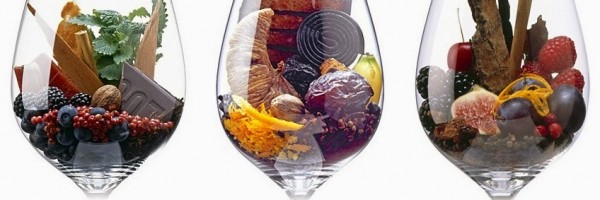
Wine Basics: Flavors – Where do they come from?
In the past decade, I’ve had the good fortune to conduct hundreds of private wine tastings pouring rare treasures for a wide variety of thirsty audiences including novices and devoted oenophiles,famous CEO’s, celebrities, and even a Franciscan friar recently. Surprisingly, the most frequently-asked-questions are often the same regardless of the wherewithal of the audience or size of the cellar. One of the first questions normally entails something like, “When I taste blueberry or plum in this wine does that mean the winemaker has added this flavor during the process?” Since my personal expertise lies in fine wines $100+ I cannot speak for mass market wines, but I’m not aware of collector-levels winemaker adding specific flavors** or fruits (beyond grapes of course). Hence, when wine tasting notes mention flavors such as “lemon oil and butter” in a Chardonnay or “dark chocolate and graphite” in a Cabernet the wines do not literally contain these substances. Rather, at least one taster has discerned flavors (when sampling the wine) reminiscent of those substances.
Often these flavors are acquired by other factors during the winemaking process such as the barrel treatment, the yeast strains used during fermentation or the soil from the vineyard expressing it’s “terroir”. There are also naturally found chemical compounds known as “phenols” in the wine once it has fermented. These chemical compounds are also found in other fruits and foods we consume regularly. So you very well may be detecting a cinnamon chemical compound in your wine! Just note that this is a naturally occurring compound and that the spice was not actually added into the wine.
For decades, wine connoisseurs have developed an array of terms that are now common among expert tasters yet, understandably, remain incomprehensible to most wine lovers. A few personal favorites I hear regularly include: “barnyard” (Pinot Noir), “cat pee” (Sauvignon blanc), “pencil shavings” (Cabernet), “sea shells” (Chardonnay), “leather” (Syrah), and “fresh asphalt” (Zinfandel). My best explanation is wine aficionados employ these descriptors with similar creative license as an art critic emoting about a Picasso painting. While an art novice might only see disjointed, squiggly lines of blue, the critic might define the painting as “tortured”, “provocative”, or “exuberant”.
**Rumors do abound that some renowned, collector-level wineries do secretly add wood chips, baking powder and other elements to their $100+ Cabernets but my lips are sealed (for now) on this subject.
Leave a Comment